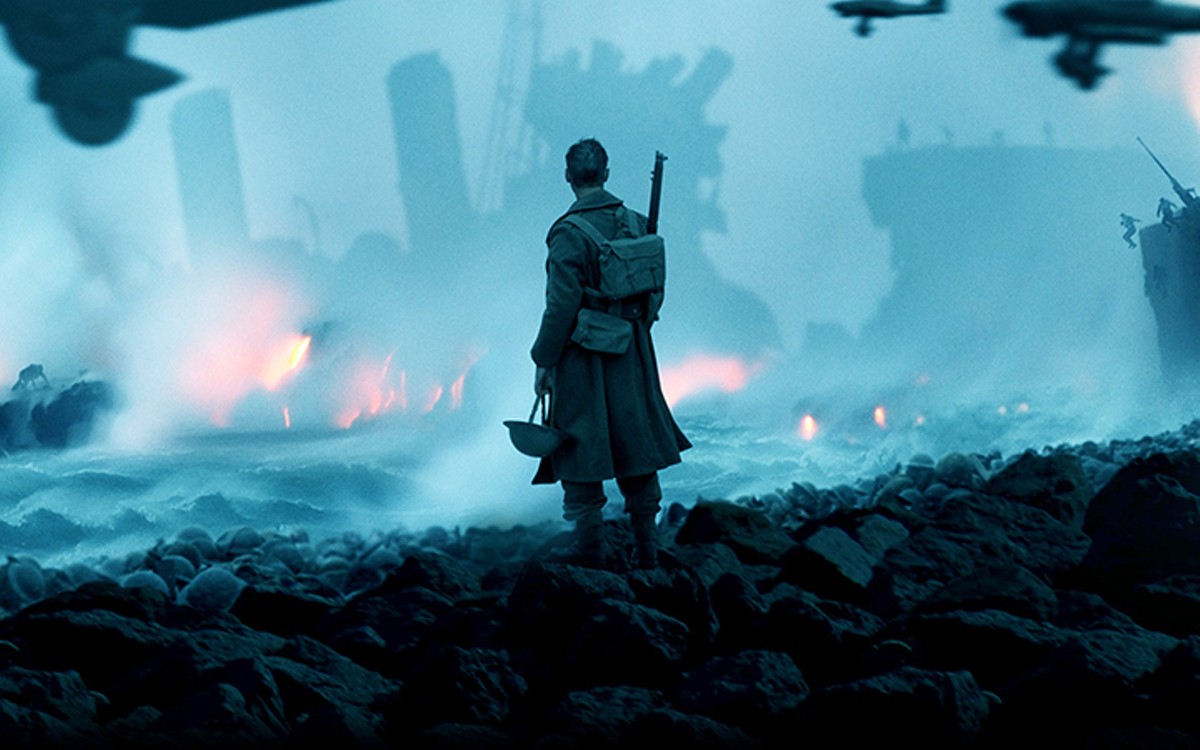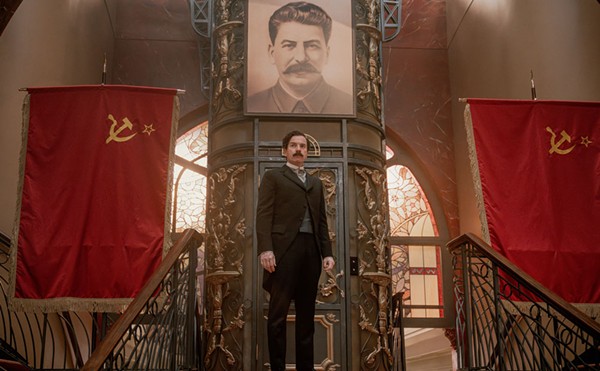After seeing the first feature-length American war movie, Birth of a Nation, in 1915, President Woodrow Wilson said, “It’s like writing history with lightning.”
Lightning can strike twice in the same place, it seems. That place is the movies, and the latest lightning-thrower is writer-director Christopher Nolan, who has channeled the likes of Steven Spielberg, David Lean and Elem Klimov (Come and See) to create his own war-movie masterpiece.
Dunkirk, of course, is the story of the evacuation of more than 300,000 Allied troops (mostly British and French) from the beaches of Dunkirk, France, in the spring of 1940, following the Germans’ victories in the Battle of France. The events have been depicted on film before, perhaps most notably in the identically titled Dunkirk (1958) starring John Mills and Richard Attenborough, but it was vastly different from Nolan’s version, with the military aspect only part of its story. It also cannot compare visually or emotionally to the new version.
Nolan’s film is a visual triptych, divided into the land (the evacuation on the beach), the sea (the role played by the civilian “little ships”) and the air (the planes). And just as Nolan played with the structure of time in Memento (2000), he does so here, as each of the three elements observe time differently. For instance, the land story lasts a week, the sea tale lasts a day, and the air characters experience just one hour. Yet Nolan manages to weave them together. It’s a device that keeps us on our toes mentally in a film that would have otherwise been rather straightforward and predictable, at least structurally.
Performance and pacing are excellent. With a runtime of just 106 minutes, the film is tight, with an almost unbearable intensity from start to finish. However, its brevity means screen time is limited for every actor. Mark Rylance (the main actor in the sea section) is wonderfully subtle as always, Kenneth Branagh (land) captures a wide range of emotion while seemingly doing almost nothing, Tom Hardy (air) is effective, and relative newcomer Fionn Whitehead (land) is competent in what might be described as the lead role.
But because the script is light on dialogue and backstories, the star of the film is the visual design (helped along by a powerful Hans Zimmer score). Nolan looked to silent films for inspiration, and more than once during the dogfights I thought of Hell’s Angels. Like that 1930 movie, Dunkirk eschews CGI almost entirely, even going so far as to employ 6,000 extras, the real evacuation locations, and vintage ships and planes, including several of the same small boats involved in the real evacuation. This gives the film a documentary feel. Still, Hoyte Van Hoytema’s beautiful cinematography is occasionally stylistic, such as when he shoots the sinking of a ship askew, allowing the water to enter the vessel horizontally, like an old-fashioned wipe transition shot. And his use of 65mm film cameras – both regular and IMAX – is astonishing.
Speaking of IMAX, make sure you select your theater carefully, as your choice may affect which aspect ratio you view the film in. True IMAX screens, of course, offer a differently shaped picture than traditional movie screens. To complicate matters, the footage shot in non-IMAX 65mm cameras features a different ratio than the footage shot with IMAX cameras. Editing the two formats together while keeping continuity and preserving his experiment with the three time structures was surely an unenviable task. Nolan likened it to a game of chess.
Figuring out which theater is offering the movie on celluloid will be a chess game as well. To start, check out this FilmStage article, which offers a discussion of aspect ratios and a list of cinemas showing the movie in 70mm, which is the projection format for films shot in 65mm. (However, OW has been unable to verify that these theaters have rented 70mm film projectors. I fear that many will be projecting digitally instead, and I encourage you to call the theaters for information.)
Despite the film’s wonder, some audience members will long for more dialogue and greater character development. Atonement (2008), for instance, captured the emotion of World War II and, specifically, the evacuation at Dunkirk in one monumental, continuous shot, while also embedding its audience in a heartbreaking love story. For that reason, among others, it’s better than Nolan’s Dunkirk. However, for sheer emotional, visual and visceral impact, this film is difficult to beat and, at least for me, equals or bests Spielberg’s Saving Private Ryan among great war movies.
The only flaw I could find is that two or three of the minor characters, particularly those in the land segment, tend to blend together. That could be because some look alike, or perhaps because some lines are lost in the cacophony of score and sound effects. But those are forgivable considering the “fog of war” feel that Nolan was attempting. (The characters probably become more distinct upon a second viewing, or perhaps when your eyes are not clouded with tears, as this reviewer’s were at times.)
This is Nolan’s most emotionally wrenching film, and likely his best. While The Prestige (2006) is also deserving of masterpiece status, that was an entirely different experience, as were Interstellar (2014) and Inception (2010). All four films reek of greatness, much more so than Nolan’s Batman movies, but Dunkirk is his most deeply felt and most human.
Go ahead and engrave the Oscar now, for this is the best film of the year and one of the 10 greatest of the century. It’s a film that the thousands of men who died on the beaches of Dunkirk in 1940 earned the right to expect.

















